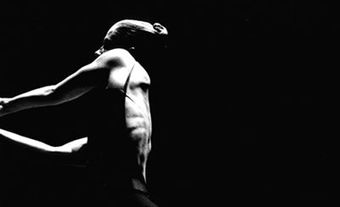William Douglas
William Douglas, "Bill," Choreographer, dancer, teacher (b at Amherst, NS 25 Sept 1953; d at Montréal, Qué 10 March 1996). Douglas was best known for the elegant, intelligent and sensual formality of his 30 choreographies - much of it achieved with the collaboration of contemporary composers and lighting designers. His dance works, crafted over a decade from 1986 to 1996, also reflected a Cartesian fascination with vortices, honed during early studies and work in architectural design and drafting.
While attending Carleton University's School of Architecture, Ottawa, from which he graduated in 1978, Douglas danced in student productions with the Ottawa Dance Centre Workshop. He continued to dance professionally in Canada with the TORONTO DANCE THEATRE (1978-83), the Judy JARVIS Dance Company (1980), the Toronto Independent Dance Enterprise (1982), DANCEMAKERS (1980-83) and EDAM (1983).
In 1981 he went to New York City, founded William Douglas and Dancers and began a 10-year study of technique and composition at the Merce Cunningham Studio, supported by numerous study and project grants from the CANADA COUNCIL and the Ontario Arts Council. Returning to Montréal in 1991, he founded William Douglas Danse and capped his teaching career as a permanent guest professor of technique and composition in the Dance Department of the University of Québec.
Choreographies completed during his New York sojourn took on the character of short studies of human nature, often performed with live music: Archipelago (1986); ...and the Air (1987); E/motional/ogic (1988), which was directed and produced in a film documentary by Lisa Cochrane in 1995; and Carved in Flesh (1990). It was with the bold high-energy trio We Were Warned (1992), created with new music composer Reid Robins, that Douglas won the choreography prize from the IV Rencontres choréographiques internationales de Seine Saint-Denis in France, and went on to tour numerous Canadian and European dance festivals. The trio was followed by an accumulation cycle: the quartet Apollo (1993), quintet The Golden Zone (1994), sextet Love Is a Stranger (1995), and finally the septet Heroes (1996).
Douglas drew inspiration from the kinetic and human qualities of particular dancers who remained close artistic collaborators: Daniel Firth, Bill Coleman, Laurence Lemieux, Francine Liboiron, Dominique Porte and others. It was dancer José NAVAS, with whom he won a New York Bessie award in 1995, who shared his life and art. Soon after Douglas's serene and courageous death in 1996, Navas was appointed artistic director of William Douglas Danse. The company gave its last performances in 1996.

 Share on Facebook
Share on Facebook Share on X
Share on X Share by Email
Share by Email Share on Google Classroom
Share on Google Classroom


